Early Verdict
Pros
- +
Powerful
- +
Connects well with smartphone
Cons
- -
Lopsided design
- -
Tricky touchscreen
Why you can trust TechRadar
News from CES that LG is making a play for the fitness tracker space is nothing new – it did just the same thing last year.
But this time around, things have got smarter and more oddly designed, with the new LifeBand Touch offering functionality beyond just wandering around and seeing a number raise up.
That's obviously a large part of the raison d'être for the LifeBand, but there's loads more functionality that makes it a more compelling (and sometimes cheaper) option for those looking to have something help explore the data in their life.
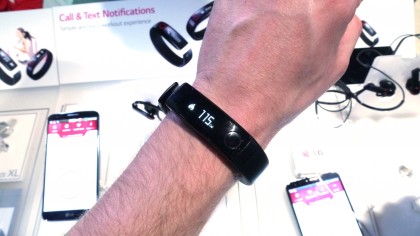
The design of the LifeBand is definitely something that will take getting used to – it was almost repellent the first time I picked it up. Featuring a not insubstantial break in the ring to allow you to put it on, the design oddity is compounded by the fact the screen element is so much heavier.
This meant that not only does it not connect all the way around your wrist, it will wobble about thanks to being top-heavy. This problem was relieved to some extent by moving to a smaller version, but the gap does split a little too easily, being flexible as it is to help you get it onto your arm.
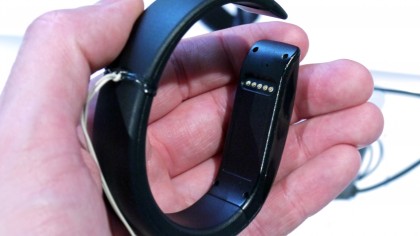
The screen, a small OLED affair, is monochrome and touchscreen and is the primary way you interact with the LifeBand, apart from the glowing button to the right.
The display is fairly low resolution but is more than visible enough - and having it running this way allows for the band to have a five day battery life, which means you won't need to pointlessly charge it over and over.
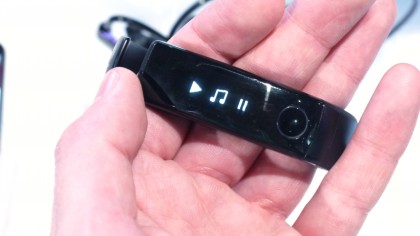
Although not available on the stand, the LG LifeBand takes its power from a separate charging device that clips on to the power pins on the inside of the band - we're still waiting for more things to be available for charging through a microUSB connection, which is part of the charm of the Sony Core.
We're not overly taken by the design of the LifeBand, mostly because it's very mobile on your wrist and the display can be hard to use sometimes, as it's mostly interacted with by swiping up and down, or left and right. Given there's a very small space to be able to hit, this isn't always the most accurate.
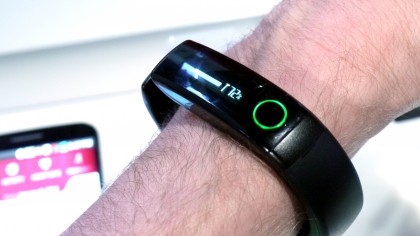
What I did really like is the way it pairs so easily with your phone to give a lot more information. As you can see from the app, it's taking more than a few cues from Nike in terms of visual indication of your daily progress, thanks to the three axis accelerometer onboard.
But the coolest part for me is the fact it can show text and call notifications as well as control your music on the go. For those that don't want a smartwatch but do like the idea of being able to simply tap to change tracks or discreetly see who is calling when the phone is in the pocket, this is a great compromise.
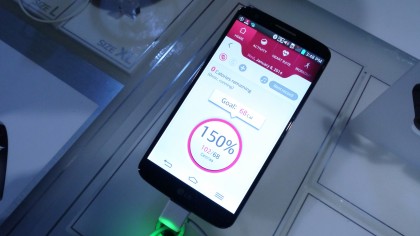
The idea of starting and stopping your exercise is odd, as it feels like it should be constant, but this does mean you get targeted information that you can send to a variety of websites. LG has partnered up with a wide range of running and fitness applications to make its data accessible for those that already use the likes of Runkeeper, meaning the LifeBand will be a natural step up for some.
If you fancy getting your hands on your heart rate as well, LG has added in another cool accessory: the cleverly-named Heart Rate Headphones, which is a pair of buds that can biometrically sense your heart rate when plugged into your ears.
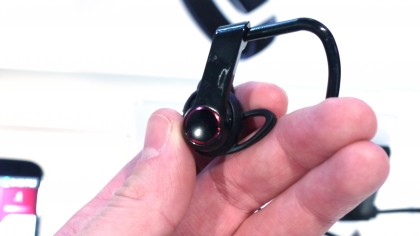
This idea is fairly novel, showing that it's not always chest straps that are needed to make sure you can tell that the ticker is still plugging away. These headphones can tell you the heart rate even when you're not exercising, which makes them more useful that for just when you're working out.
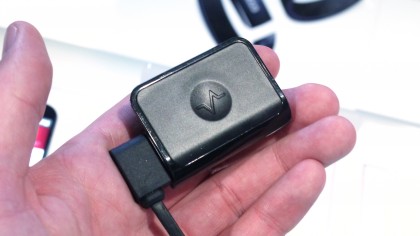
The design, for something crammed with such technology, is fairly minimalist, and the buds themselves stay in fabulously thanks to the clip provided - they feel light without being flimsy, and once in the ear have a really solid fit (although we sadly couldn't listen to any music through them to test out the sound quality).
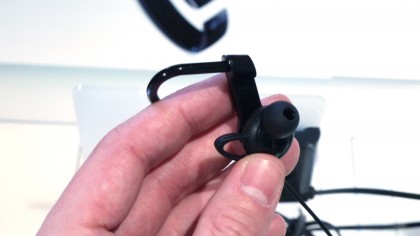
The big downside is the mega clip that they need to attach to in order to sync up with the smartphone and draw power - we're used to Bluetooth headphones managing without such a thing, so the Heart Rate Headphones feel very much like version one at the moment.
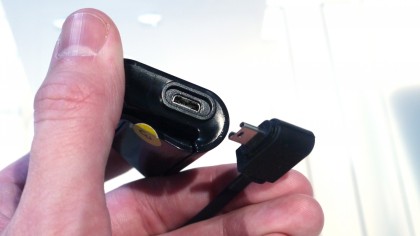
It's not overly cumbersome and will easily melt away into the background once your start jogging or lifting, but it still slightly ruins the stylish feel of these buds.
The LifeBand is likely to cost under $200, with no release date or other international launch news at the present time.
Early verdict
LG has made a significant play into the wearable space with the new LifeBand and Heart Rate Headphones combo - I really like the innovation on offer and I can't wait to try out the headphones on a run.
The band itself does have a very 'and me' feel, and while I'm happy it's not a total carbon copy of the Fuelband, the odd gapped design does leave me a little cold, as does the fiddly touchscreen.
But that shouldn't detract from the fact that this is a great technological compromise and offers more functionality than most of its competitors - here's hoping it shines during our long term test.

Gareth has been part of the consumer technology world in a career spanning three decades. He started life as a staff writer on the fledgling TechRadar, and has grew with the site (primarily as phones, tablets and wearables editor) until becoming Global Editor in Chief in 2018. Gareth has written over 4,000 articles for TechRadar, has contributed expert insight to a number of other publications, chaired panels on zeitgeist technologies, presented at the Gadget Show Live as well as representing the brand on TV and radio for multiple channels including Sky, BBC, ITV and Al-Jazeera. Passionate about fitness, he can bore anyone rigid about stress management, sleep tracking, heart rate variance as well as bemoaning something about the latest iPhone, Galaxy or OLED TV.
What is a hands on review?
Hands on reviews' are a journalist's first impressions of a piece of kit based on spending some time with it. It may be just a few moments, or a few hours. The important thing is we have been able to play with it ourselves and can give you some sense of what it's like to use, even if it's only an embryonic view. For more information, see TechRadar's Reviews Guarantee.